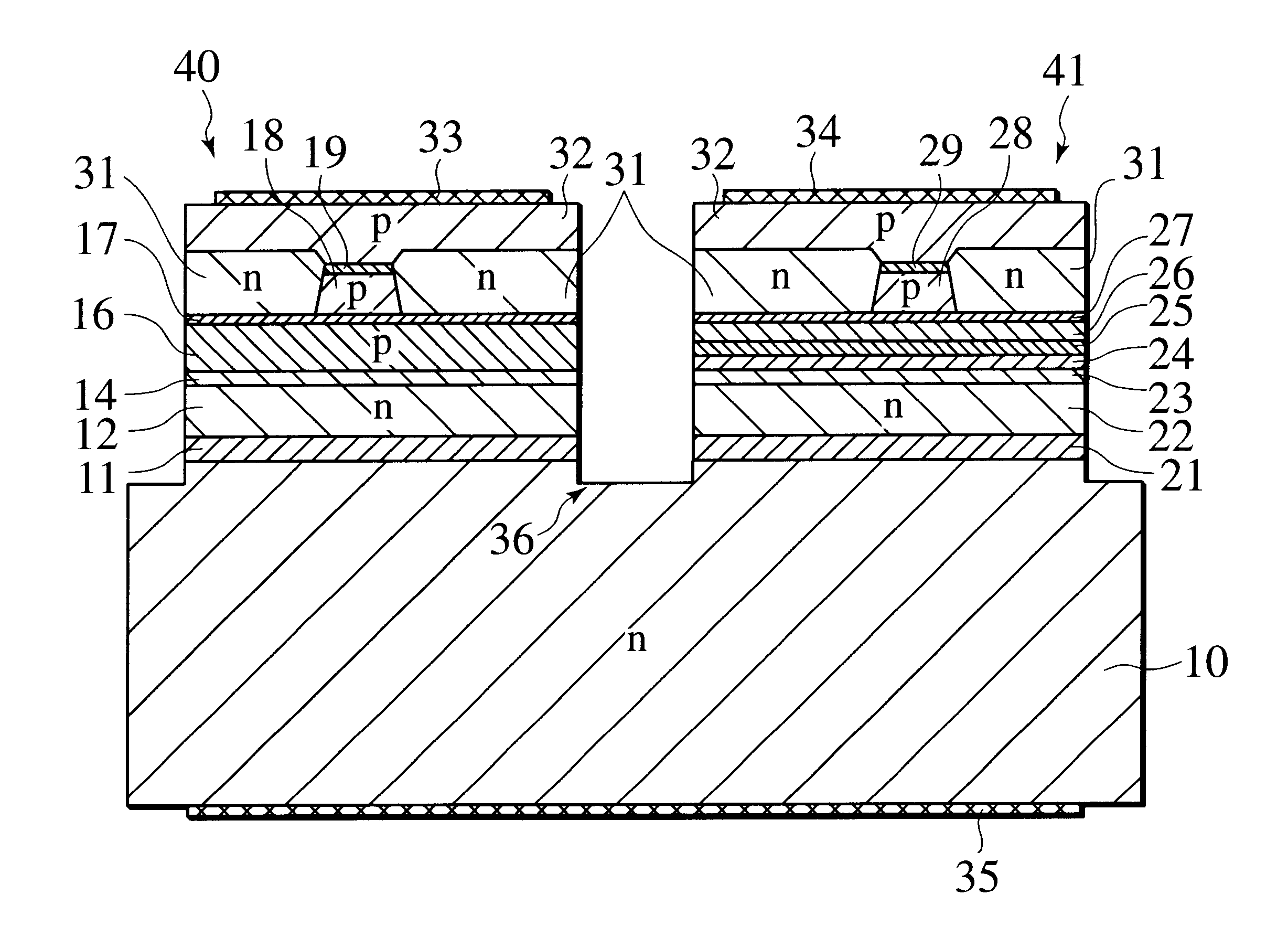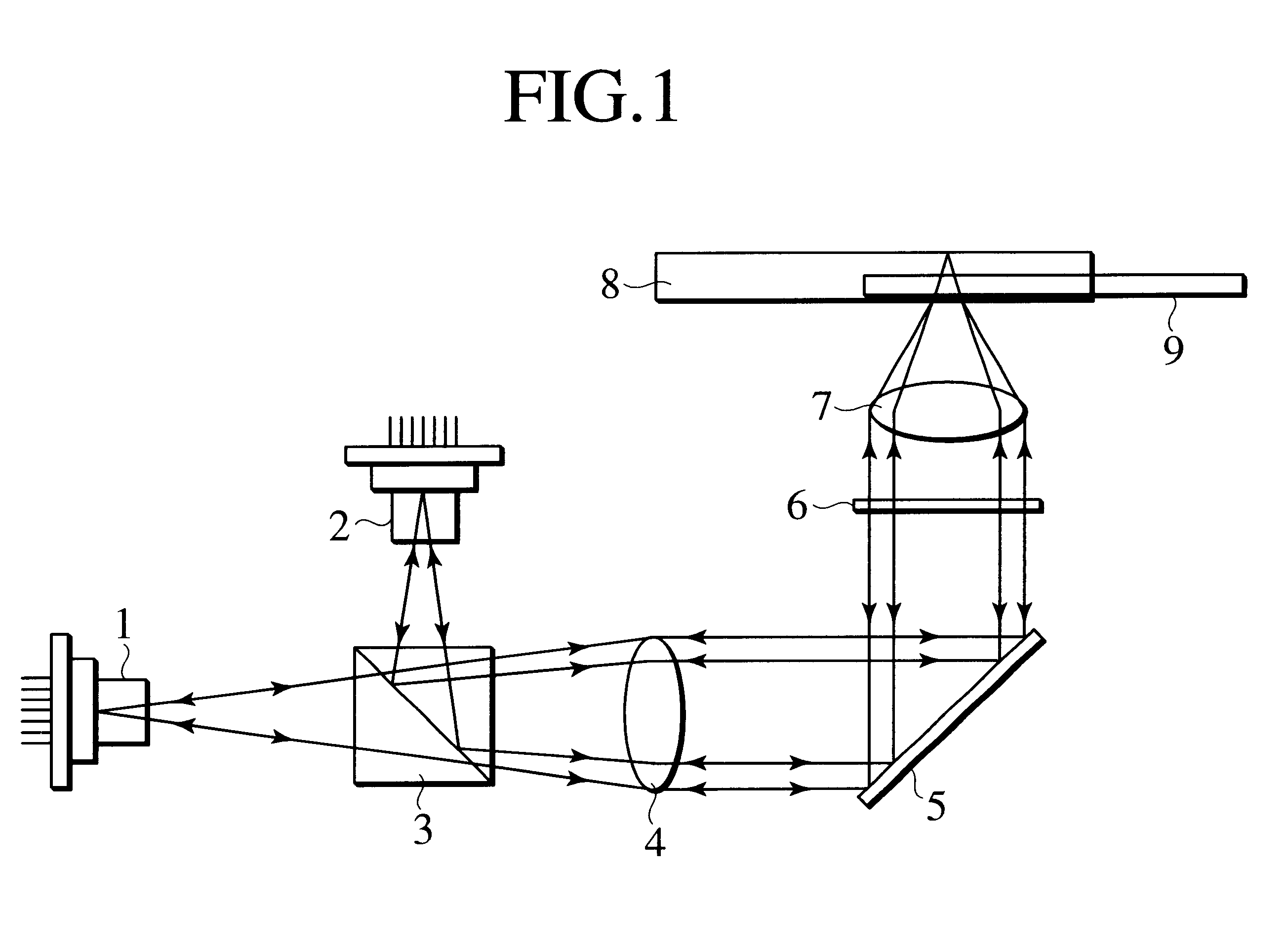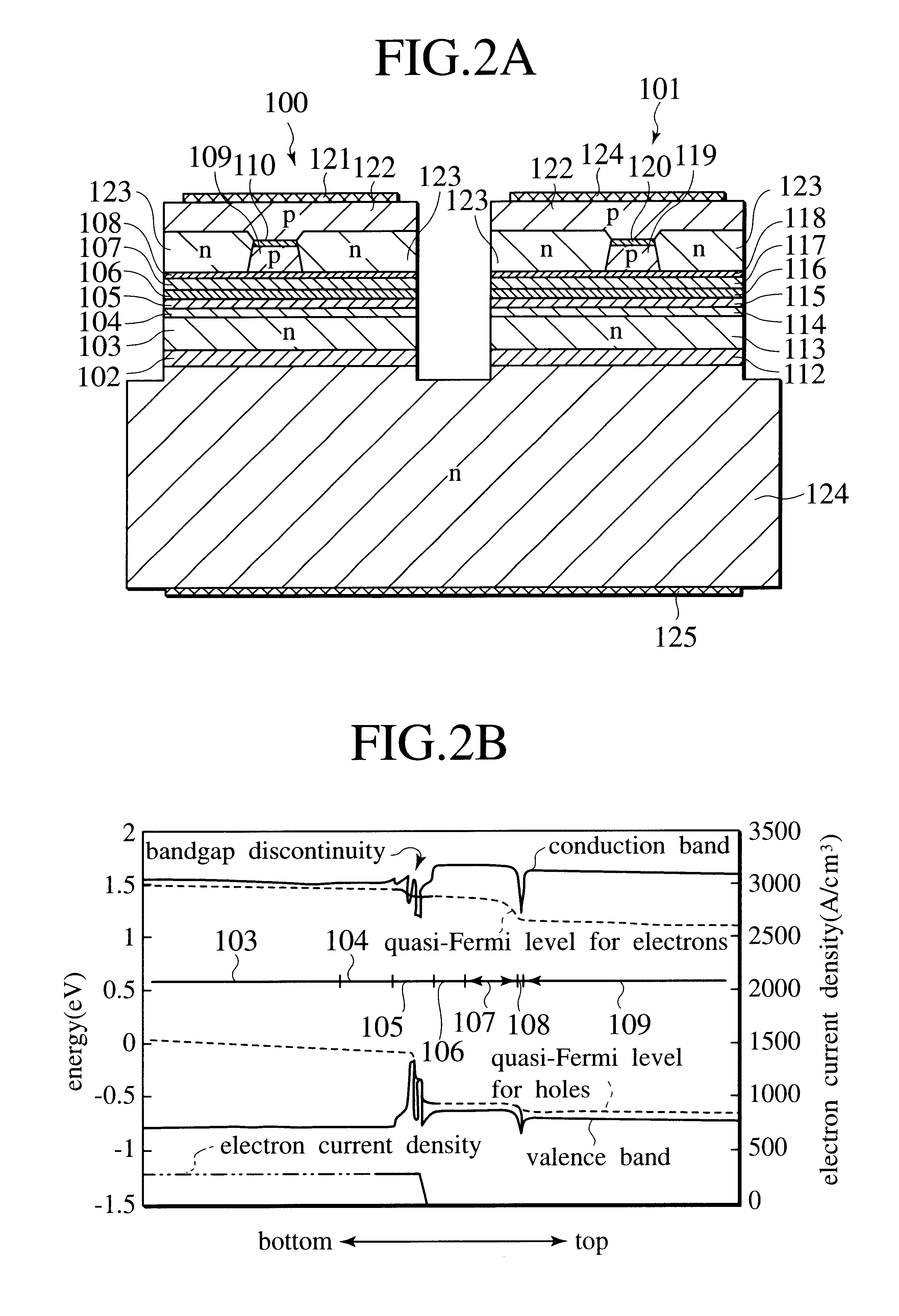Monolithic multi-wavelength semiconductor laser unit
a semiconductor laser and monolithic technology, applied in the direction of semiconductor laser arrangement, laser details, laser arrangement, etc., can solve the problems of difficult to make the optical pickup small and light, require a very long time for assembling the optical system, and the injection efficiency of electrons to be very low
- Summary
- Abstract
- Description
- Claims
- Application Information
AI Technical Summary
Problems solved by technology
Method used
Image
Examples
first embodiment
FIG. 3A is a sectional view of a double wavelength semiconductor laser unit emitting radiations with wavelengths of 780 nm and 650 nm according to a first embodiment of the present invention. FIG. 3 shows the sectional view vertical to a ridge stripe direction formed in the double wavelength semiconductor laser unit. As shown in FIG. 3A, a first laser 40 emitting the radiation with the wavelength of 780 nm and a second laser 41 emitting that of 650 nm are merged on the same n-type GaAs crystal substrate 10. In the first laser 40, a second p-type cladding layer (first laser cladding layer of second conductivity type) 18 is delineated to have convex stripe referred to as "ridge", and both sides of the ridge 18 are sandwiched by GaAs current-blocking layers (first laser current-blocking layers) 31. Similarly, in the second lasers 41, second p-type cladding layer (second laser cladding layer of second conductivity type) 28 is delineated to have convex stripe, or the ridge, and both the ...
second embodiment
FIG. 4A is a sectional view of a double wavelength semiconductor laser unit, having oscillation wavelengths of 780 nm and 650 nm, according to a second embodiment of the present invention. FIG. 4A shows the sectional view vertical to a ridge stripe direction of the double wavelength semiconductor laser unit. A first laser 50 emitting the radiation with the wavelength of 780 nm and a second laser 51 emitting that of 650 nm are merged on a same n-type GaAs semiconductor substrate 10. In the first and second lasers 50, 51, second p-type cladding layers 59, 28 are respectively delineated to form convex stripes, or the ridges, and both the sides of the ridges 59, 28 are sandwiched by GaAs current-blocking layers 31, respectively. This structure channels the current into narrowly limited areas of the active layers 55, 24 then generate the striped gain distributions within the active layers 55, 24 Also, the parts of lights penetrated into first p-type cladding layers 57, 26 among lights tr...
third embodiment
FIGS. 5A and 5B show a third embodiment of the present invention, which has a gain waveguide type structure referred to as "a tapered stripe (TAPS) structure". A first laser 200 emitting the radiation with the wavelength of 780 nm and a second laser 201 emitting that of 650 nm are merged on an n-GaAs crystal substrate 224. N-type buffer layers 211, 221 are formed on the crystal substrate 224, correspondingly to the first and second lasers 200, 201. An n-type InGaAlP cladding layer (first laser cladding layer of first conductivity type) 212 is formed on the n-type buffer layers 211. And an n-type InGaAlP cladding layer (second laser cladding layer of first conductivity type) 222 having the compositions equal to the n-type InGaAlP cladding layer 212 is formed on the n-type buffer layer 221. An AlGaAs bulk active layer 214 having thicknesses of 0.01 to 0.1 .mu.m are formed on the n-type InGaAlP cladding layer 212. An MQW active layer 224 sandwiched by waveguide layers 223, 225, is form...
PUM
 Login to View More
Login to View More Abstract
Description
Claims
Application Information
 Login to View More
Login to View More - Generate Ideas
- Intellectual Property
- Life Sciences
- Materials
- Tech Scout
- Unparalleled Data Quality
- Higher Quality Content
- 60% Fewer Hallucinations
Browse by: Latest US Patents, China's latest patents, Technical Efficacy Thesaurus, Application Domain, Technology Topic, Popular Technical Reports.
© 2025 PatSnap. All rights reserved.Legal|Privacy policy|Modern Slavery Act Transparency Statement|Sitemap|About US| Contact US: help@patsnap.com



